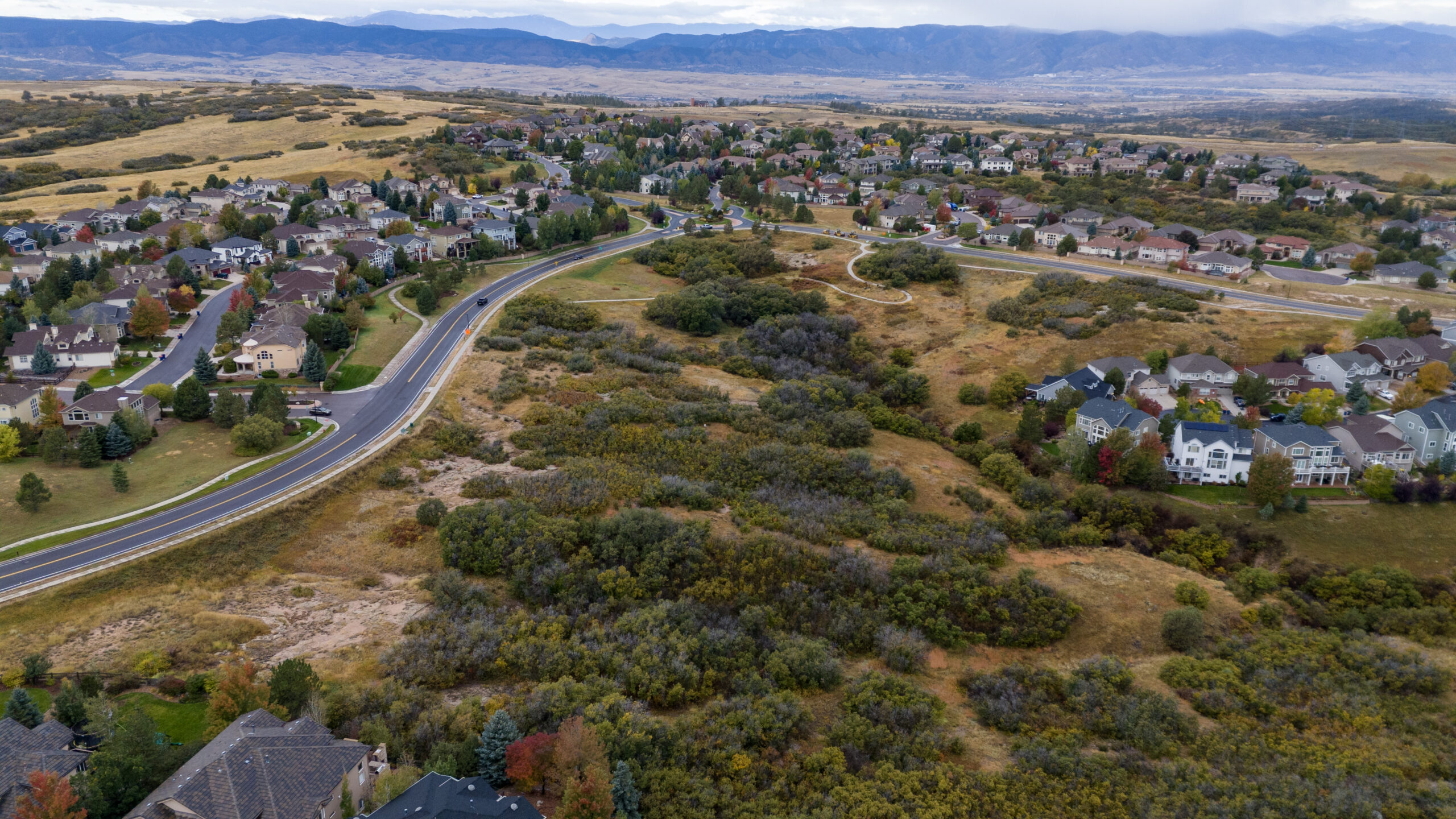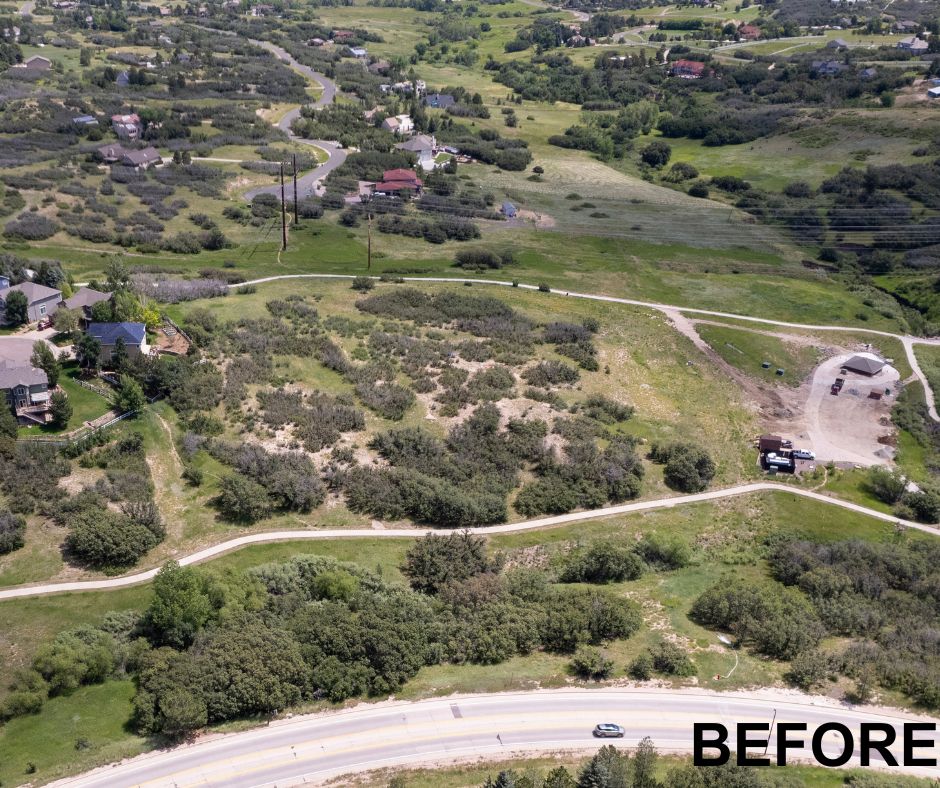Wildfire Mitigation Projects
Community Wildfire Prevention Implementation Plan
The City worked with specialists to develop a Community Wildfire Prevention Implementation Plan (CWPIP). The plan addresses the most immediate mitigation needs of open space parcels in the City and establishes guidelines and best practices for conducting effective wildfire mitigation work, ensuring long-term fire resilience.
To develop this Community Wildfire Protection Implementation Plan, a thorough evaluation process was undertaken. This process involved analyzing various data sources and conducting on-site assessments. Crucial data inputs included the identification of critical infrastructure locations and escape routes, mapping of the Wildland-Urban Interface (WUI) boundaries, risk assessment data from the Colorado Wildfire Risk Assessment Portal (CO-WRAP), a detailed examination of the diverse fuel types present within the community, and topographical factors and their potential influence on fire behavior were also taken into consideration. Every open space parcel under the City's jurisdiction was also physically evaluated through on-site inspections.
The CWPIP was completed under the assumption that the work would need to be phased over 3 years. However, the City Council has identified wildfire mitigation and education as a high priority and authorized all 255 acres of mechanical mitigation in the open space listed in the CWPIP to be completed in 2024. Additionally, the City received a Colorado State Forest Service wildfire mitigation grant. This award will supplement the funds required to mitigate the 255 acres of City-maintained open spaces identified as an immediate priority.
Following the completion of mechanical mitigation work identified in 2024, the City will continue to identify additional open space properties to receive mechanical mitigation work, as well as determine maintenance tactics moving forward.
The map below shows the properties that will be receiving mechanical mitigation work in 2024. They are identified by their original phase. However, all 255 acres will be mitigated this year.
Mechanical Mitigation
Mechanical mitigation is a necessary tactic for effective wildfire mitigation. The current goal of wildfire mitigation for the community is primarily to address the overgrown oak in open spaces. This oak is highly flammable vegetation and is an ideal environment for the rapid spread of wildfire. Mechanically mitigating this oak using oak mosaics, where the contiguous oak is interrupted by removing clumps of oak, allows for a reduction of the rate at which a fire can spread. This allows firefighters to stop the fire more quickly, should one occur.
This method of mitigation allows for the preservation of scenic areas while also implementing the necessary fire mitigation measures. This mitigation work will also continue to a wildlife enhancement in the community. The current overgrown oak environment hinders the growth of diverse vegetation, which negatively impacts deer, birds, pollinators, insects, and other wildlife. By thinning and removing oak, diverse vegetation is able to regrow and thrive, which will create healthier habitats for a variety of wildlife species.
Below demonstrates this type of work, which was conducted in the city in 2023. These photos were all taken in different seasons however, they show the oak environment before mitigation (left photo), immediately after completion of mechanical mitigation (middle photo), and a year prior (right photo). As shown, this work breaks up the oak into clumps but maintains the scenic value of the open space.
2023 COMPLETED PROJECTS
Daniels Gate Road and Griggs Road
The City conducted mechanical wildfire mitigation work in open space near Daniels Gate Road and Grigs Road. This work began in November 2023 and continued for approximately six weeks.
This mitigation work included creating oak mosaics. By strategically thinning or removing some oak trees and underbrush, mosaic treatment can create natural firebreaks. These firebreaks can slow the spread of wildfires, giving firefighters a better chance to control the blaze and protect the community. This method also preserves scenic areas while implementing fire mitigation measures.
Monarch Blouvard and Briar Cliff Drive
In the summer of 2023, the City contracted with Goats on the Go- Denver South to conduct targeted goat grazing mitigation. This wildfire mitigation initiative utilized targeted goat grazing to manage 8.5 acres of scrub oak vegetation. This eco-friendly approach effectively reduced fuel loads, created natural firebreaks, and controlled invasive species.
Scrub oak vegetation can serve as potential fuel for wildfires due to its dry and easily ignitable nature. Targeted goat grazing helps reduce the amount of available fuel by selectively consuming low-lying vegetation, dead plant material, and grasses. This reduces the overall fuel load, making it more difficult for fires to spread and intensify.
FAQs
What is mechanical wildfire mitigation?
Mechanical wildfire mitigation involves using heavy machinery to clear, thin, or modify vegetation in fire-prone areas to reduce the risk of wildfires.
The City's focus is to use mosaic treatments, which allow for a more nuanced approach, preserving scenic areas while implementing fire mitigation measures.
Why is it necessary?
Mechanical wildfire mitigation is necessary to create defensible spaces, reduce fuel loads, and protect lives, property, and the environment from the devastating impacts of wildfires.
How does it work?
Machinery like bulldozers, mulchers, and chainsaws are used to create firebreaks, remove flammable vegetation, and manage overgrown areas, preventing the rapid spread of wildfires.
Mosaic treatments are part of a broader strategy of fire adaptation, which aims to create landscapes and communities that are more resilient to wildfires. By reducing the risk of catastrophic fires, mosaic treatments contribute to overall fire-adapted ecosystems.
What are the benefits?
Mechanical mitigation enhances community safety, protects property, reduces the intensity of wildfires, and promotes overall fire resilience. It's a proactive measure to prevent wildfire disasters.
Mechanical fire mitigation also benefits firefighters. When communities have created defensible spaces and reduced fuel loads, it becomes safer for firefighters to defend homes and properties during a wildfire.
What is the difference between mechanical mitigation and goat mitigation?
Wildfire mitigation tactics using goats and mechanical methods are both valuable approaches, but they differ significantly in how they reduce wildfire risks and impact the environment.
Goats offer a more natural and selective approach, which is well-suited for smaller areas and sensitive ecosystems.
Mechanical methods, on the other hand, are more rapid and extensive, making them suitable for large-scale projects.










